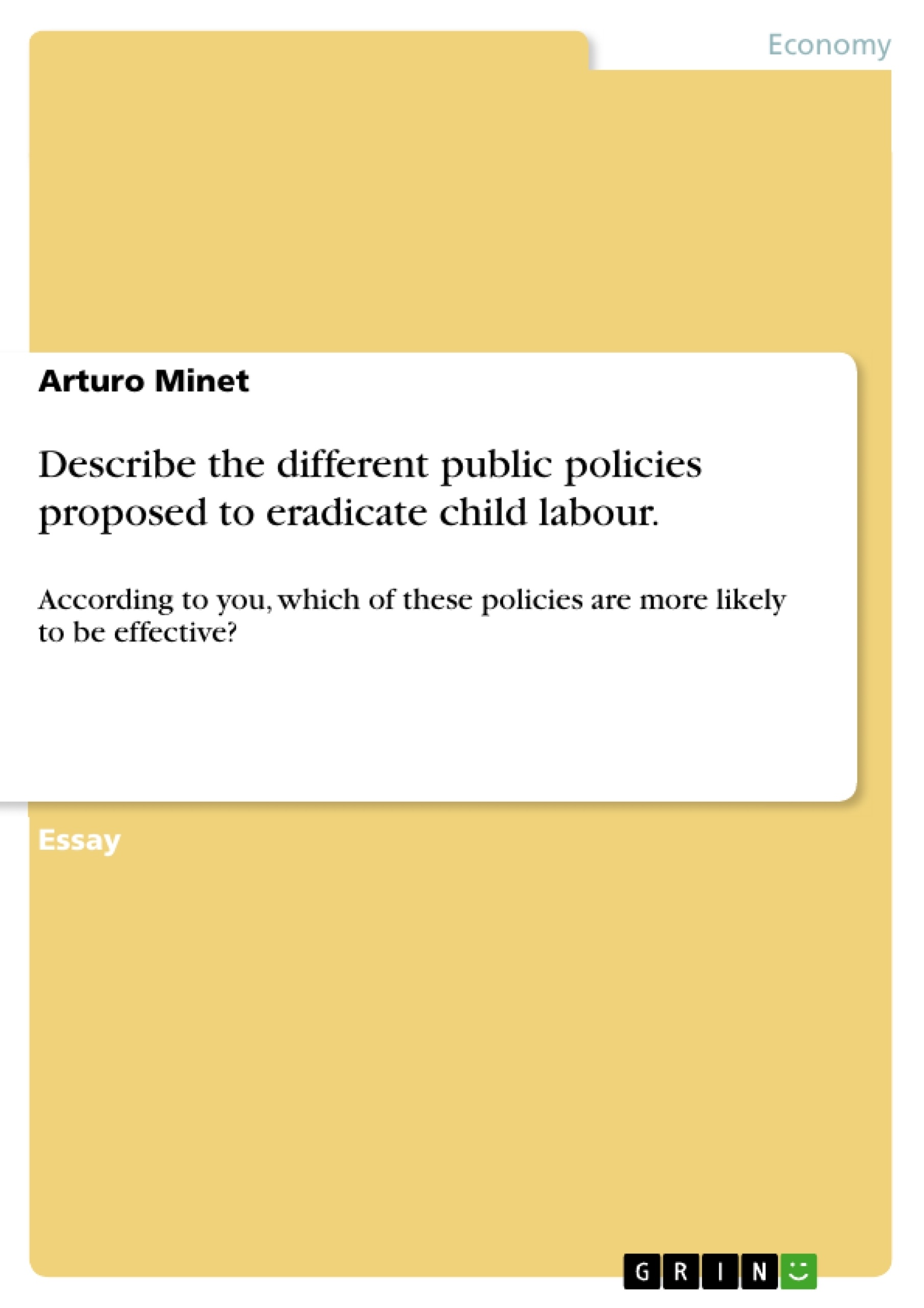According to one of the latest reports released by UNICEF in June 2006, more than 190.7 million children aged 5-14 years are currently engaged in child labour. While the Asian and Pacific regions harbour the largest absolute number of child workers (127.3 million, 19%), it is Sub-Saharan Africa which has the highest participation rate (29%, 48 million). Many of these children are forced into debt bondage, are misused as soldiers in armed conflicts or trafficked into prostitution. Other estimates from the ILO state that in 1995 there were up to 120 million children under the age of 15 carrying out paid work . This figure, it claims, would rise to 250 million if part-time work and household activities were to be included as ‘child labour’. Obviously the estimates can vary widely depending on the data used and the definition of ‘work’ and ‘child’ but the ILO Convention No. 138 of 1973 seems to be a reasonable benchmark. It sets the minimum age for the admission to employment or work to at least 15 years. Children below that age are consequently regarded as economically active if the work they perform prevents them from a proper school attendance.
This essay aims to describe and evaluate the different policies proposed to curb child labour.
Inhaltsverzeichnis (Table of Contents)
- 1. INTRODUCTION.
- 2. PROPOSED POLICIES TO ERADICATE CHILD LABOUR.
- 2.1 DETERMINANTS OF CHILD LABOUR.....
- 2.2 SEVEN POLICIES TO ERADICATE CHILD LABOUR
- 3. EVALUATION AND CONCLUDING REMARKS.
Zielsetzung und Themenschwerpunkte (Objectives and Key Themes)
This essay examines the different policies proposed to combat child labor, aiming to analyze and evaluate their effectiveness. It explores the determinants of child labor, considering both supply and demand factors.
- Determinants of child labor, including factors such as fertility, household size, time allocation, risk management, parental education, and household income.
- The role of the labor market structure and prevailing production technology in influencing child labor.
- Various policies aimed at eradicating child labor, categorized as intra-national, supra-national, and extra-national.
- The evaluation of these policies in terms of their effectiveness in addressing the determinants of child labor.
- The impact of child labor on both developing and developed economies.
Zusammenfassung der Kapitel (Chapter Summaries)
The first chapter introduces the issue of child labor, highlighting its prevalence and impact on both developing and developed economies. It provides an overview of recent high-profile cases involving child labor in the production of goods by renowned organizations and companies.
The second chapter delves into the determinants of child labor, examining both the supply and demand factors that contribute to the problem. It explores the role of fertility, household size, time allocation, risk management, parental education, and household income as supply-side factors. On the demand side, the chapter analyzes the structure of the labor market and the prevailing production technology.
The third chapter presents an evaluation of various proposed policies to eradicate child labor. It explores the effectiveness of these policies in addressing the determinants of child labor identified in the previous chapter.
Schlüsselwörter (Keywords)
This essay focuses on the critical issue of child labor, examining its determinants, various policies proposed to combat it, and the effectiveness of those policies. Key terms and concepts explored include child labor, determinants of child labor, supply and demand factors, intra-national policies, supra-national policies, extra-national policies, evaluation, and effectiveness.
- Quote paper
- Arturo Minet (Author), 2007, Describe the different public policies proposed to eradicate child labour., Munich, GRIN Verlag, https://www.grin.com/document/77368



